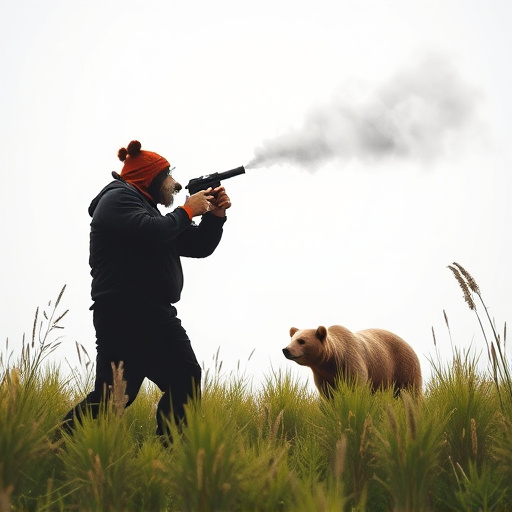Understanding bear behavior is key for safety in diverse habitats. Bear pepper spray is an effective non-lethal defense, but TSA restrictions limit its carry-on use in air travel. Travelers must check regulations, store canisters securely in checked baggage, and confirm they meet 3.4-ounce size limits to ensure access during wilderness trips. Staying informed about these restrictions enables preparation for potential wildlife encounters while adhering to aviation security protocols.
“In the vast wilderness, understanding bear behavior is key to your survival. This comprehensive guide explores how to navigate encounters with these powerful animals, focusing on the strategic use of bear pepper spray. With an eye on safety, we delve into TSA restrictions for self-defense sprays, ensuring you stay protected while traveling through bear country. By combining knowledge of bear habitats and efficient use of pepper spray, you can significantly enhance your odds in potential attack scenarios.”
- Understanding Bear Behavior and Their Habitat
- The Role of Pepper Spray in Bear Attacks
- Navigating TSA Restrictions for Self-Defense Sprays
Understanding Bear Behavior and Their Habitat
Understanding bear behavior is key to your safety in their habitat, which spans diverse areas from forests to remote mountains. Bears are generally shy and reclusive, preferring to avoid human interaction. However, certain factors can trigger an attack, such as unexpected proximity, food sources, or protecting their cubs. Knowing their habits and habitats allows you to take preventive measures.
When it comes to protection against bear attacks, Bear Pepper Spray is a popular option that meets TSA restrictions for travel. It’s highly effective in deterring bears due to its capsaicin content, which irritates their eyes and nasal passages. Always ensure you understand local regulations regarding pepper spray and other self-defense tools, especially when planning outdoor adventures in bear country.
The Role of Pepper Spray in Bear Attacks
In the event of a bear attack, one of the most effective non-lethal defenses is pepper spray. Designed to temporarily disable and deter aggressive bears, this powerful tool has become a staple for outdoor enthusiasts navigating wild territories. Bear pepper spray creates a painful, stinging sensation when sprayed directly into an attacker’s face, giving the user crucial seconds to escape or defend themselves.
However, it’s essential to understand the TSA (Transportation Security Administration) restrictions on bear pepper spray when carrying it onto flights. The TSA allows travelers to carry small containers of pepper spray for self-defense purposes, but there are strict size limitations—typically 3.4 ounces or less per container—and they must be packed in checked baggage. This restriction ensures safety during air travel while still providing access to a vital protection tool for wilderness survival situations.
Navigating TSA Restrictions for Self-Defense Sprays
When preparing for a wilderness survival situation, it’s crucial to understand how to navigate TSA restrictions for self-defense sprays like bear pepper spray. While these powerful tools can be life-saving in encounters with aggressive wildlife, they must adhere to specific regulations when traveling. The Transportation Security Administration (TSA) has strict rules regarding liquids and aerosols allowed on aircraft, which includes self-defense sprays.
To ensure you have access to your bear pepper spray during your trip, it’s essential to check the TSA guidelines well in advance. Bear pepper spray canisters should be stored in checked baggage, not carry-on luggage. They must also meet specific size requirements; typically, containers cannot exceed 3.4 ounces (100 ml) per container and fit within a quart-sized plastic bag for easy screening. Staying informed about these restrictions will help travelers prepare effectively for potential wilderness encounters while adhering to security protocols.
Bear attacks are a serious concern for anyone venturing into wild habitats, but with the right knowledge and tools, risks can be mitigated. Understanding bear behavior and utilizing effective deterrents like pepper spray are key strategies. When choosing self-defense sprays, navigating TSA restrictions is essential. By staying informed about these considerations, you can enhance your safety during outdoor adventures and reduce the likelihood of a dangerous encounter with bears. Remember, knowledge is your best defense in the wilderness.
